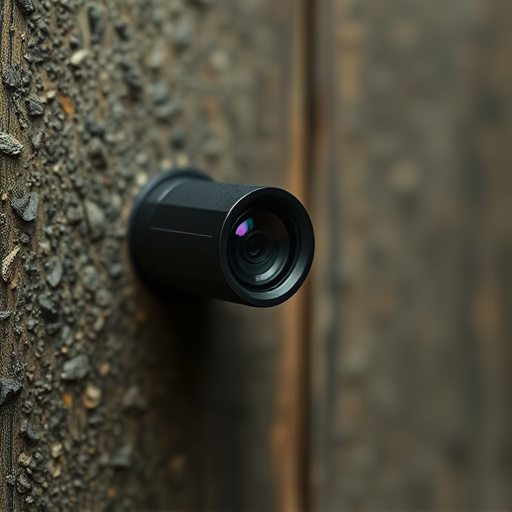In today's digital age, privacy concerns drive demand for innovative surveillance tools, with hidden smallest spy cameras leading the way. These compact devices offer high-quality footage, advanced features like night vision and motion detection, and discreet placement options. Marketed as everyday items or wearable devices, they cater to home security, pet monitoring, and professional intelligence gathering. However, their use raises legal and ethical questions regarding privacy protection, consent, and responsible deployment to balance security with personal freedoms.
In an era where privacy is a precious commodity, the demand for discreet surveillance solutions has surged. Enter the hidden smallest spy camera—a revolutionary technology designed to capture footage without drawing attention. This article explores the growing need for such devices, delving into the advanced technology that makes them virtually invisible. We’ll navigate through various types available in the market and provide crucial factors to consider for optimal performance. Additionally, we’ll touch on legal and ethical aspects, emphasizing responsible use of these powerful tools.
Understanding the Need for Discreet Surveillance: Why a Tiny Spy Camera is Valuable
In today’s digital age, discretion and privacy are paramount in various settings—from homes to businesses. This has led to a growing demand for innovative surveillance solutions that offer covert and undetectable monitoring capabilities. Enter the hidden smallest spy camera—a technological marvel designed to blend seamlessly into its surroundings while capturing high-quality footage. These tiny cameras pack advanced features such as night vision, motion detection, and wireless connectivity, making them versatile tools for discreet surveillance.
Whether it’s for home security, pet monitoring, or professional intelligence gathering, the hidden smallest spy camera provides a level of discretion that conventional surveillance systems cannot match. Their compact size allows them to be placed virtually anywhere—from bookshelves to door jams—without raising suspicion. This capability makes them invaluable assets in situations where covert observation is necessary, ensuring peace of mind and providing tangible evidence when needed.
Unveiling the Technology: How These Cameras Stay Hidden
The evolution of technology has led to some truly remarkable innovations, and one such advancement is the development of hidden smallest spy cameras. These miniature devices are a testament to modern engineering, designed to capture footage discreetly and efficiently. The key to their success lies in their ability to remain virtually undetectable, making them perfect for surveillance purposes.
By utilizing advanced miniaturization techniques, engineers have managed to pack high-quality cameras into incredibly small packages. This allows them to be hidden almost anywhere—from everyday objects like pens or buttons to more sophisticated placements like fake doorknobs or electrical outlets. The hidden smallest spy camera captures video and images with remarkable clarity, often equipped with night vision capabilities, ensuring that every detail is visible, even in low-light conditions. Their power sources can range from internal batteries to solar energy, further enhancing their versatility and longevity.
Types of Hidden Smallest Spy Cameras Available in the Market
The market for hidden smallest spy cameras is diverse, catering to various needs and preferences. One common type is the miniature camera, often disguised as everyday objects like keys, pens, or even smoke detectors. These tiny devices pack a surprising amount of functionality, featuring high-resolution video and audio capabilities. Another popular option is the wearable spy cam, designed for discreet use during travel or surveillance missions, allowing users to capture footage hands-free.
Wireless hidden cameras are also in high demand due to their easy setup and remote access features. These compact devices can be easily hidden in plain sight, such as inside picture frames, potted plants, or even clothing. With advancements in technology, these smallest spy cameras offer not only covert recording but also real-time monitoring capabilities, making them versatile tools for personal and professional use.
Choosing the Right Spy Camera: Factors to Consider for Optimal Performance
When selecting a hidden smallest spy camera, several factors come into play for ensuring optimal performance. Firstly, consider the intended use case and environment; different settings may require specific features like night vision, motion detection, or weather resistance. The quality of the video and image resolution is another critical aspect; higher definitions offer better detail, especially in small spaces. Look for cameras with sharp 1080p or even 4K resolution for the most accurate surveillance.
Storage capacity and connectivity options are also essential. Wireless cameras with microSD card slots provide flexibility and easy data transfer, while a longer battery life is invaluable for undisturbed monitoring. Additionally, features like remote control, loop recording, and water-resistant casing can significantly enhance the camera’s effectiveness as a hidden spy device.
Legal and Ethical Considerations: Using Spy Cameras Responsibly
The use of hidden smallest spy cameras raises important legal and ethical considerations that cannot be overlooked. In many jurisdictions, the placement and operation of surveillance devices are strictly regulated to protect individual privacy rights. It’s crucial for users to understand and comply with these laws to avoid potential legal consequences. This includes obtaining consent from individuals being recorded, respecting reasonable expectations of privacy, and adhering to restrictions on where cameras can be installed (e.g., no hidden cameras in restrooms or other private areas).
Ethically, responsible use of spy cameras necessitates a balance between legitimate concerns for security and the preservation of personal freedoms. Transparent deployment of such devices is key; individuals should know when they are being recorded. Moreover, data collected from these cameras must be handled securely and discreetly to prevent unauthorized access or misuse. Users should also consider the broader societal implications of surveillance technology, ensuring it does not foster an atmosphere of mistrust or invade personal spaces unnecessarily.
